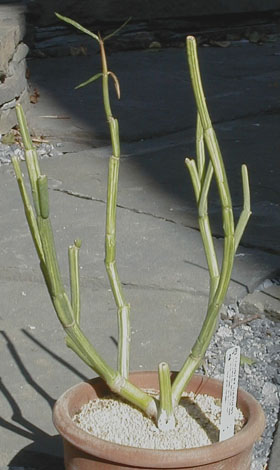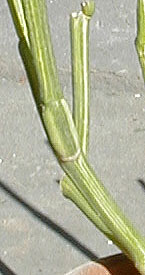
This plant is native to the Canary Islands and has been described since 1812.
This plant is fairly easy to grow . It has a long 'dormant' period and will tolerate erratic watering. Last winter I had it in my studio under normal flourescent studio lighting, it began to grow and had more leaves on it than I had ever seen before. It had a few flowers in May after I took it back outside and it had lost most of its leaves. The plant has bloomed sparsely every year that I've had it. It is in a clay pot, in a soilless mix to which I've added traction grit and marble chips. The marble chips were added to stabilize the plant in the pot. The plant will get top heavy and pull itself out of a lighter soil mix.


